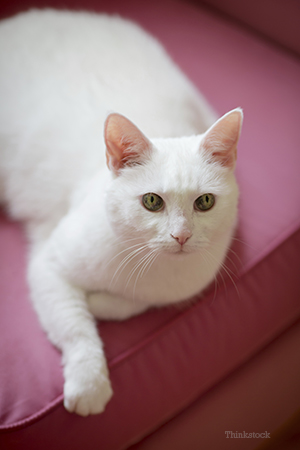
Dr. Phil Zeltzman is a traveling, board-certified surgeon in Allentown, PA. His website is www.DrPhilZeltzman.com. He is the co-author of “Walk a Hound, Lose a Pound” (www.WalkaHound.com).
Kelly Serfas, a Certified Veterinary Technician in Bethlehem, PA, contributed to this article.

Max, a gorgeous 6-year-old kitty, was sleeping on a reclining chair when he was abruptly woken up by pots and pans falling on the kitchen floor. Terrified, he tried to jump from the recliner. Somehow, his right, back leg got caught and prevented him from running away from the perceived danger.
A few hours later, his guardian found him hiding under the bed, shivering and clearly painful in the back leg. Max’s guardian immediately took him to the family veterinarian, who observed him limping around the exam room. The veterinarian initially suspected a torn ACL. Upon further exam, the veterinarian declared: "I think your Max has a deranged knee!"
What’s a deranged knee?
Max’s guardian asked what this bizarre condition was. The veterinarian explained that there are four ligaments in the knee: two inside the knee (anterior and posterior cruciate ligaments) and two outside the knee (collateral ligaments). When more than one ligament is torn, the knee is so severely affected, that the condition is called a deranged knee.
Most of the time, both cruciate ligaments and one collateral are torn. Occasionally, with very violent trauma, all four ligaments are torn.
How is a deranged knee treated?
A deranged knee is so wobbly that the only reasonable treatment is surgery. The goal is to make the knee more stable. Post-op care involves a combination of strict rest, pain management and physical therapy.
Max was referred to a board-certified surgeon (yours truly). When a cat’s leg gets caught somewhere, often in a piece of furniture, it classically leads to a deranged knee. Sure enough, Max had three torn ligaments (one collateral and both cruciate ligaments). They were repaired with heavy nylon sutures to mimic or imitate the original ligaments. Max went home the day after surgery.
Recovering from a deranged knee
After two weeks of confinement and physical therapy, Max had his stitches removed. At that point he was "toe-touching," which means that he was starting to put gentle pressure on the foot. After another six weeks of strict rest and physical therapy, he had another progress exam: he was using the leg very well.
It was time to progressively increase Max’s activity level. We designed a program to help him rebuild muscle and regain flexibility in the surgery knee. By using toys and food, Max’s guardian was able to entice him to follow her around.
A deranged knee leads to arthritis. We can manage arthritis by ensuring a healthy weight and providing joint supplements such as glucosamine and fish oil (omega 3 fatty acids). Your veterinarian or your surgeon may recommend a weight loss food and/or food that is made specifically to treat arthritis.
If your cat is ever diagnosed with a deranged knee, here are three questions to ask your family veterinarian:
- Who is the best person to fix this?
- What is the likely outcome of surgery?
- What can we do to help manage the arthritis?
If you have any questions or concerns, you should always visit or call your veterinarian -- they are your best resource to ensure the health and well-being of your pets.
